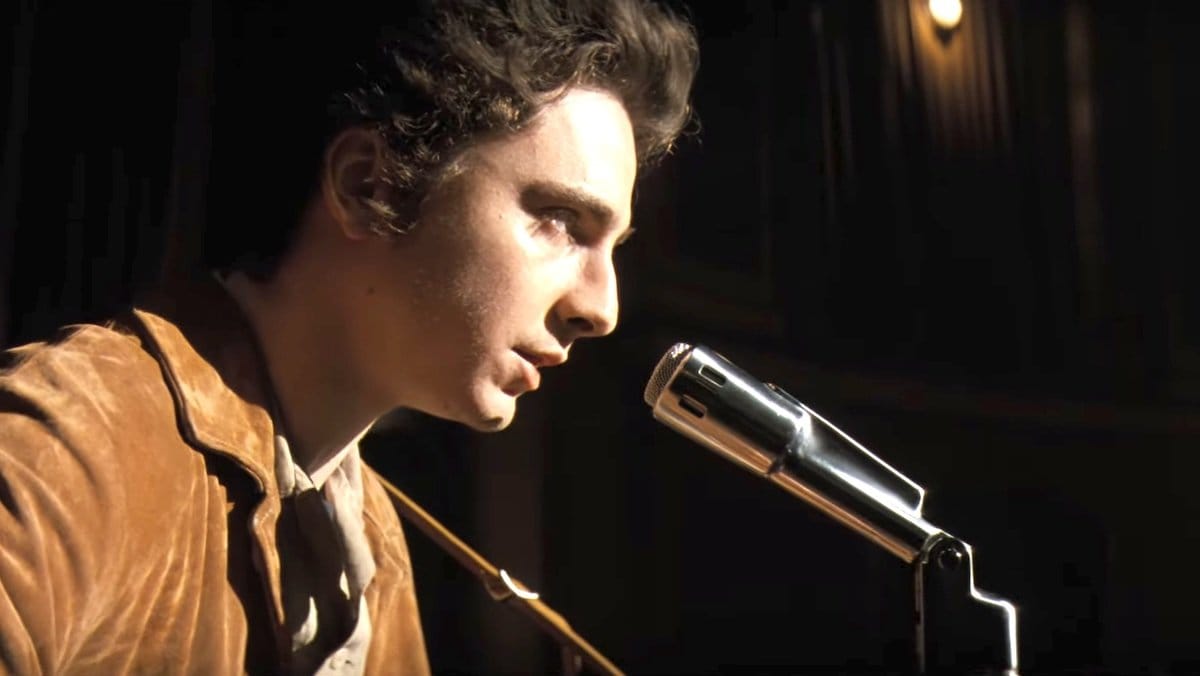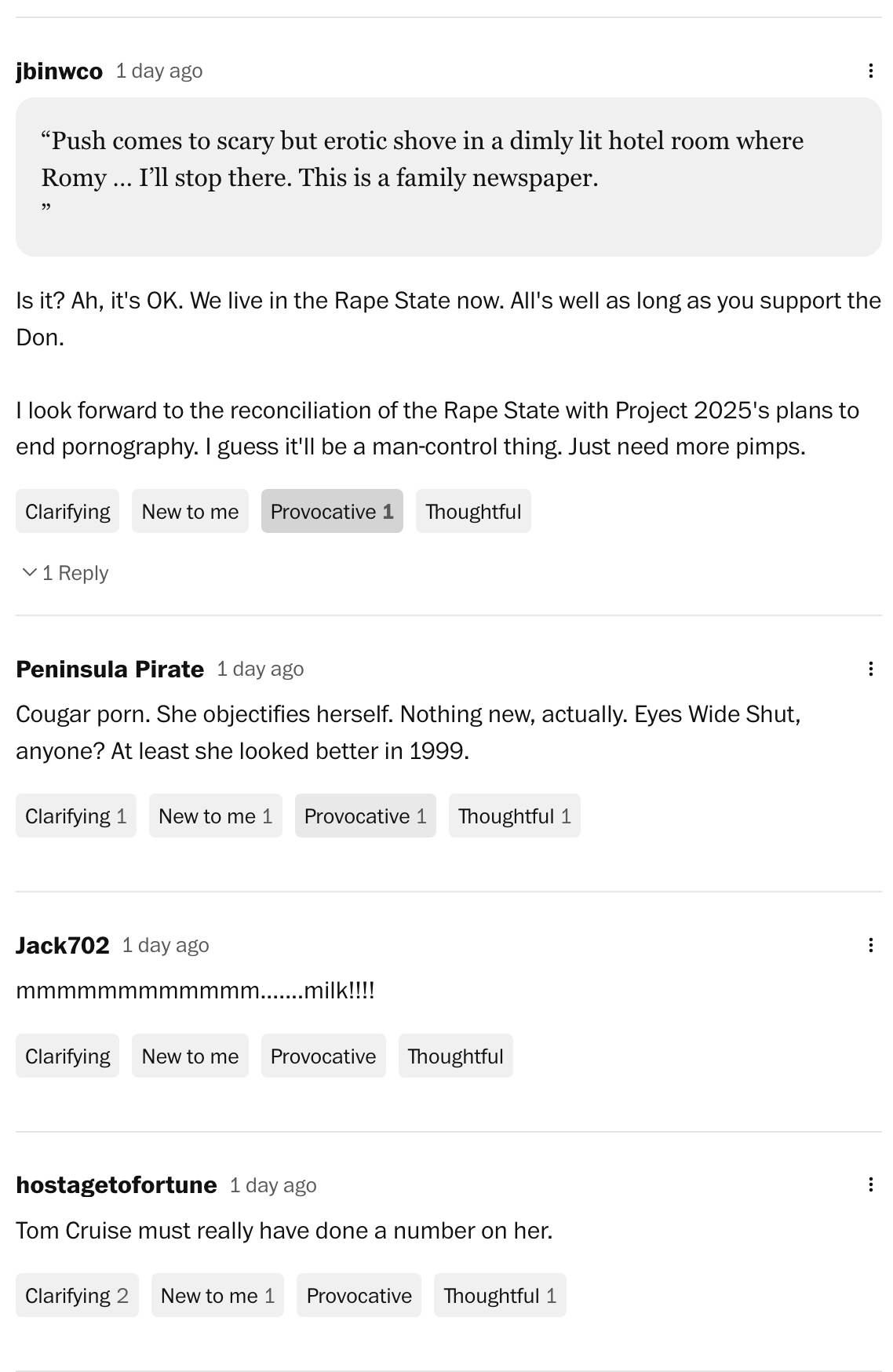Tangled Up in Bob - further thoughts on "A Complete Unknown"
Some further thoughts on "A Complete Unknown, a broadside against nasty commenters, and a review of "The Tree of the Sacred Fig"

I watched the Dylan biopic again last night, this time with Mrs. Movie Critic and a couple of friends, one a banjo player of some skill who confessed to spending time in a deep hole of Bob worship during his youth. They loved it and I still liked it (a lot) despite being not quite transported, and my issue on this, my third watch, wasn’t so much that the facts of those four combustible years were misrepresented and/or compressed and/or compromised in the name of presenting a coherent entertainment for mainstream audiences as that the structure of the standard movie biography is, for me, unable to contain such an uncontainable figure.
The irony I’m coming around to, in other words, is that not enough in “A Complete Unknown” is invention, at least enough to properly tell the tale of a trickster who invented himself from the ground up the moment he landed on MacDougal Street and who has kept reinventing himself over and over to this very day.
Which is why Todd Haynes’s monumental Dylan fantasia “I’m Not There” (2006) is the only Bob biopic that matters to me, since it takes free license to combine and elide and collude, casting six different actors as (some of) the many different Dylans, including the Dustbowl wannabe (Marcus Carl Franklin), the pop-culture celebrity (Christian Bale), the autumnal Western-movie survivor (Richard Gere), and “Judas” (Cate Blanchett), the folk-rock amphetamine apostate of the back half of James Mangold’s new movie.
I want a movie about the young Bob Dylan to make me high – my senses lit up and gone electric the way his music of that era did for me and still does. “I’m Not There” makes me high. “A Complete Unknown” doesn’t. But I’ve watched it three times now and been entertained all three, picking out new details and confabulations and going back to the records once the credits roll. And if you multiply that by 1 million or 10 million, that’s something, isn’t it? As my friend and critical colleague, Sean Burns posted the day after Christmas, “We watched A COMPLETE UNKNOWN last night and now my nephew has been blasting Dylan in his room all morning so I guess it worked.”

What I find interesting is that those who know the story best aren’t among the loudly griping purists. It’s seemed a given among the insiders that this is a movie to introduce or reintroduce Bob to the masses and that a certain number of liberties should be allowed – maybe more than a certain number given that this is a man who told early acquaintances he grew up in a carnival (not true) or played with Bobby Vee (true) or was Bobby Vee (c’mon). The young ‘uns can spelunk online for the real story on Wikipedia; better yet, you and they can read the open-minded Variety roundtable discussion “‘A Complete Unknown’ Fact vs. Fiction: Bob Dylan Experts Go Deep on What’s True or Fanciful in the Celebrated Biopic”. It’s hosted by my old Entertainment Weekly colleague Chris Willman in conversation with Elijah Wald, who literally wrote the book on which the movie is based; David Browne, another friend and former EW colleague whose new book, “Talkin’ Greenwich Village: The Heady Rise and Slow Fall of America’s Bohemian Music Capitol,” I’ve been meaning to read; and Dylanologist Ian Grant.
The comment made by this crew that struck me anew was that there’s one character who really should be in the movie and isn’t. Dylan was already romantically involved with Sara Lowndes by 1965 – they’d gone on vacation together and he would marry her four months after the Newport Folk Festival appearance that serves as the climax of “A Complete Unknown.” Elle Fanning’s character Sylvie Russo is present in those final Newport scenes, even though the woman she’s based on, Suze Rotolo, wasn’t, and the affair between Baez and Dylan had long cooled by mid-1965. But, as Willman writes, “a romantic quadrangle may have been a bridge too far for the screenwriters.” Either that, or Dylan himself may have asked that Lowndes, a civilian, not be portrayed, as he requested that Rotolo, a civilian who’d written a memoir, be fictionalized.
Well, we’ll always have “Sad-Eyed Lady of the Lowlands.”
Clips of Dylan’s actual performance at Newport ’65 are on YouTube –
– and you can rent Murray Lerner’s “The Other Side of the Mirror: Bob Dylan Live at the Newport Folk Festival,” from whence those clips come and which includes the singer’s entire sets from Newport ’63 and ’64, on Apple TV and elsewhere.
FWIW, here’s my Washington Post review from last week.

Some thoughts on user comments under my reviews, here and at the WaPo, Globe and elsewhere: I read ‘em. A lot of my media colleagues don’t. I’ve had more than one friend in the business look at me with astonishment when I admit I have a vested interest in how readers respond to a piece. Or at least a certain subset of readers, the ones who feel – and this is why a lot of said friends steer clear, I think – they have something to say. Getting even more granular, that subset can be divided into the people who have something legitimately thoughtful or knowledgeable to contribute to a discussion, the people who have an axe to grind (political, personal, psychotic) and the people who just want to fling shit at the walls.
The Post just changed its comments format from clear to head-scratchingly obtuse: You can no longer “like” or “dislike” a comment but can only respond that you found it “clarifying,” “new to me,” “provocative” or “thoughtful.” And there’s an AI summary up top that seems even more disconnected from reality. Readers (or the type of reader who likes to comment) are up in arms over the change and it does seem like a “New Coke” moment that hopefully will be reversed.
But that’s not why I raise the subject. I’ve noticed that when I review a film starring an actress who was an accepted sex symbol in youth and has now aged past a certain point, the comments turn remarkably, viscerally ugly. This happened with my review of “Maria,” starring Angelina Jolie – sample comment: “I don't find skin and bones attractive. I don't think she has a muscle in her body, which I am sure why we never see her legs. I guess most people focus [on] her face, but that doesn't do much for me either” – and it’s happened again with my review for the new Nicole Kidman drama “Babygirl.” Since that movie concerns a dom/sub romance between Kidman’s 50-something CEO and a young company intern (Harris Dickinson) and is quite explicit on the subject of sexual repression and pleasure, the prudes, pearl-clutchers and body-shamers are out in force.

“Cougar porn,” “She makes me cringe. Ever seen her before when she had red hair and freckles and did not look anorexic? Just plain creepy now,” “Kidman? In a sexoid role? Eww!! She could do granny roles now, such as for a Spidey flick,” “she looks like an alien. disgusting.” As always, the comments comment more on the commenter than on the commented upon. The movie itself is a worthy if ultimately rather safe piece of pop transgression, but these, of course, are people who haven’t seen the movie and purport to have no interest, although I wouldn’t want to see their browser histories. I know I should know better, but I’m fascinated and depressed to see such misogyny on parade – an insistence that attractive women should lock themselves away after they turn 40, Puritan resistance to human sexuality in all its iterations, and actresses getting ridiculed for using cosmetic surgery to extend careers that would dry up if they didn’t (see “The Substance”) – all the normie hypocrisies that anonymous commenting allows people to express.
Okay, rant over. But some of you folks are telling on yourselves more than you know.
Feel free to leave a comment or add to someone else's.
Please forward this to friends – word of mouth is crucial to this newsletter's success. And if you’re not a paying subscriber and would like to sign up for additional postings and to join the discussions — or just help underwrite this enterprise, for which the author would be very grateful — here’s how.
For paid subscribers, my Washington Post review of the powerful new Iranian movie “The Tree of the Sacred Fig” is below the paywall. Happy new year, everyone – and gird your loins for 2025.





